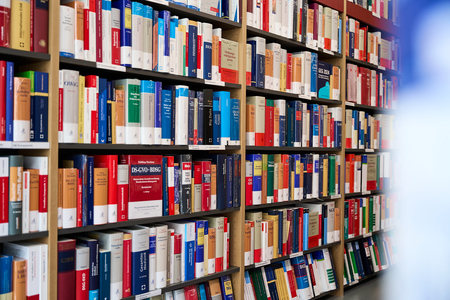Construction of Rate-Compatible Codes from Punctured Polar Codes
Produktnummer:
18c777a4fc93d846c4ada019c46864c0bd
| Autor: | Schnelling, Christopher Matthias |
|---|---|
| Themengebiete: | Channel coding Coding Elektortechnik Elektro Information Informationstechnik Kommunikation Konstruktion Technik |
| Veröffentlichungsdatum: | 11.05.2020 |
| EAN: | 9783958863415 |
| Sprache: | Englisch |
| Seitenzahl: | 204 |
| Produktart: | Buch |
| Verlag: | Verlag Günter Mainz |
Produktinformationen "Construction of Rate-Compatible Codes from Punctured Polar Codes"
Transmitting information enables technical applications modern societies are built on. This thesis focuses on channel coding, a fundamental building block of communications systems that transmit information using noisy channels. In his seminal work presented in 1948, Shannon laid ground for the mathematical theory of information and its transmission. Formalizing the notion of a noisy channel as a statistical model, Shannon establishes the maximum rate at which information may be transmitted. This upper bound, referred to as the channel’s capacity, is strict. At rates below the capacity of a given channel, information may be transmitted and recovered at the receiver, while there is no hope for doing so without a positive error probability at rates exceeding that capacity. To protect against transmission errors, channel codes add redundancy to the information, which supports a channel decoder located at the receiver in recovering the information. The field of channel coding is concerned with designing said redundancy to transmit at rates close to capacity. Shannon shows that this is possible using random codes, and a code length approaching infinity. However, neither random codes nor codes of infinite length are a viable way to build concrete systems. As a result, his work sparked a vast body of research concerned with building practical channel codes. Prominent early milestones are given by Hamming codes, Golay codes, as well as Reed-Muller (RM) codes. Early coding theory was dominated by algebraic approaches that exploit the structure of finite fields to devise efficient encoding and decoding algorithms for linear block codes on harddecision channels, with Bose-Chaudhuri-Hocquenghem (BCH) codes and Reed-Solomon (RS) codes marking major breakthroughs. Advances in computer technology enabled iterative decoders allowing turbo codes to approach the Shannon limit with moderate decoding complexity in the last decade of the 20th century, and lead to the rediscovery of low-density parity-check (LDPC) codes proposed by Gallager in 1963. Under iterative decoding algorithms operating on graphical representations of the parity-check matrix, the latter are shown to approach the Shannon limit on binary-input channels subject to additive white Gaussian noise. These developments solve the channel coding problem from a practical point of view. However, in 2008, Arikan presents polar codes (PCs), the first channel coding scheme provably achieving the Shannon capacity of output-symmetric binary-input discrete memoryless channels (BDMCs) with low-complexity encoding and decoding methods. Describing the phenomenon of polarization, Arikan shows how to create disparate mutual information terms by combining independent pairs of random variables. This results in a recursive construction that amplifies this disparity, ultimately leading to polarization. His sequential decoding algorithm exploits this phenomenon, and allows for the construction of channel codes that provably feature vanishing error probability as the code length approaches infinity. Consequently, this reignited research in coding and inspired many works that translate the polarization phenomenon to classical information-theoretic problems, but also lead to a continuously growing number of publications focusing on practical aspects of polar coding.

Sie möchten lieber vor Ort einkaufen?
Sie haben Fragen zu diesem oder anderen Produkten oder möchten einfach gerne analog im Laden stöbern? Wir sind gerne für Sie da und beraten Sie auch telefonisch.
Juristische Fachbuchhandlung
Georg Blendl
Parcellistraße 5 (Maxburg)
8033 München
Montag - Freitag: 8:15 -18 Uhr
Samstags geschlossen
